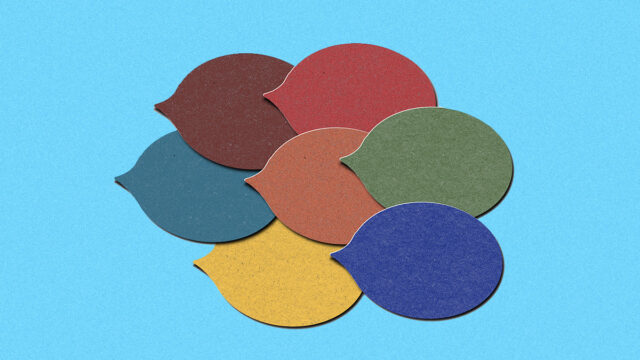Intersectionality in LGBTQ+ Marketing Is Sorely Lacking
Brand leaders frequently say, “We want to be seen as a lifestyle.” It’s a catchall where audiences are immersed in story, statement, style and sound—integrated across every conceivable platform. So what if LGBTQ+ marketing wasn’t about a month or an event, but actually about lifestyle?
Marketing for Pride in 2024 appears to be the quietest, most hesitant season in recent memory as brands pull back, even from their previous investments, to “non-divisive,” milquetoast campaigns. And while Pride expression continues to be a profound struggle in too many regions, the marketing conversation is moving on from rainbow washing and into the nuances of intersectionality, where it’s not just about being seen; it’s about being understood, represented and uplifted, all the time, in multiple ways, rather than reducing queer life to a Target T-shirt.
It’s still true that Pride is a box to tick, with the broadest of broad strokes applied to floats, stands, events, merch and sponsorships. But the larger issue ultimately is that marketers start broad, around an event for a community, and hope it will reach everyone in that community.
Their approach is outside-in. But that’s not how it works for us. The aforementioned multimedia tactics are table stakes.
So much marketing, and the cultural impact it’s had, has worked best by going inside out. Success is started with an idea of hyperdefined subculture and, in reaching that smaller group, brands reach all the people influenced by that group. Look at sneakerheads, comic fans, cult TV show nerds, essential oil enthusiasts, tarot and astrology groups. Each of these and countless more delve into the intricate use of signs, symbols, behavior, language, dress and codes that speak to immersion and authenticity in ways that show up in everyday life. From there, it broadens into the mainstream.
But in LGBTQ+ marketing, authenticity and intersectionality is not only misunderstood, it’s often flat out avoided. Consider Postmates’ 2022 “Eat With Pride” campaign. It was an interesting idea but only activated for Pride. Imagine if that was an evergreen campaign around food and queer sexuality. Similarly, take last year’s Walmart “Live Love Lesbians” T-shirts, or the blanket statement “Love Wins”—like them or not, they’re reductive and stock standard.
The opportunity for smart marketers is to start by selecting a subsection of the community you want to help and work from the inside out. Brands like Orbitz definitely start with LGBTQ+ community-centric perspectives for mapping travels—what if they developed more from a place of subcultures, for example, suggesting safe destinations specifically for nonbinary people?
Even if social good is your purpose, you can’t help the entire community at the same time. Intersectionality is the opposite of stereotyping; it’s authenticity in and of itself, rather than authenticity being a buzzword for a preset cast of characters that fit the right aesthetic. Knowing that we need to start specific, intersectionality has to take on a new meaning for LGBTQ+ work.
Intersectionality means mapping subcultures
Find the ability to push past “mainstream gay” stereotypes like glitter and coastal focus. Connect with different stages of life, alternative expression and locations where queerness moves and looks different. Have you explored and mapped queer subcultures to understand the spectrum of identities and individuals that my brand could establish an honest relationship with—to assertively build something together?
To start, consider the Gen Z goth lesbian, the elders of the Act Up and Silence=Death activist groups, the millennial trans nonbinary academic, the Gen X bisexual, the Black pansexual drag queen. All of these are real, vital and essential members of the queer community. Determine which subculture is most relevant to the value you provide.
Intersectionality means commitment
Assert commitment to building equity year-round, rather than just for a Pride event. Invest in human insight and labor to craft and refine connective messaging, rather than relying on algorithms and media placement.
When queer culture, language and expression are evolving at light speed, understanding and participating in daily cultural conversations requires time, resources and constant care. Balance this against $3.9 trillion in purchasing power and outsized influence in culture overall, and honestly, why wouldn’t you make that investment?
Collaborate around and document the personal commitment to stay the course. Enlist internal allies. Challenge the “Yes, but” and keep progressing rather than bending to and flip-flopping with political headwinds. What does commitment look like to you, especially in the face of inevitable adversity?
Intersectionality means intentional progress
Being progressive in your message in the precise name of the game in intersectional marketing. Rather than pandering to the mainstreaming of (appropriated) language—yassss, slay, hunty—or casting a good-looking white gay man, or a skinny, fashionable Drag Race queen, or making everything pink or rainbow, where can you actually express queer joy?
Shine light on an everyday human need from a queer lens. That means placing a big bet like Nike and Colin Kaepernick. It’s a commitment not just to our celebrations but—like most good marketing—to our challenges too. Did you know LGBTQ+ folks are more likely to have sleep issues? Who is going to make intentional changes in the mattress and sleep hygiene industries to make sure the people with more trouble sleeping are an inspiration for solutions?
Gather your team around the work that could actually move the needle forward in real life, rather than just generating quant reports for the bean counters. If you consider yourself “purpose-driven,” find a purpose larger than yourself.
In the end, marketing to people instead of Pride comes down to this: We have value not just in our ongoing, united struggle against hate, but in our multiplicity containing an embarrassment of potential riches in spend, loyalty and growth for brands. Create things that sell to us with a fine point, not a broad brush.
https://www.adweek.com/brand-marketing/intersectionality-lgbtq-marketing-pride/

